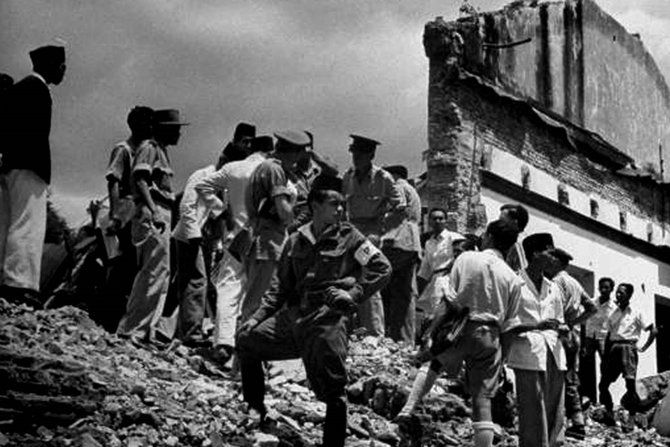
Surabaya was smoldering in the heroic events of November 10, 1945. Battles broke out and took many lives between the combatants and the British-led allied troops, who were members of the NICA (Netherlands Indies Civil Administration).
NICA troops arrived in Surabaya on October 25, 1945 led by General Aubertin Walter Southern (AWS) Mallaby, Commander of the 49th Brigade of the Indian Division. Mallaby's duties were to secure prisoners of war and disarm the Japanese troops in Indonesia, and to restore Indonesia as the Dutch East Indies under the administration of NICA.
At that time, Japan declared its defeat in World War II after two of its cities, Nagasaki and Heroshima were atomic bombed by the United States. The Allied Forces Netherlands East Indies (AFNEI) in charge of NICA brought Mallaby and his troops to Indonesia.
However, the arrival of NICA to Surabaya was considered too late, because the Japanese army's weapons had been partially disarmed by the fighters. Meanwhile, Indonesia also declared independence on August 17, 1945.
The people of Surabaya refused NICA's request to hand over the weapons seized from the Japanese soldiers. Instead, they launched a series of attacks to expel the Allied Forces during 27-30 October 1945.
A popular heroic event was the Buick car ambush that killed Mallaby at the Red Bridge. The death of General Mallaby drew the anger of the British troops, to provoke a bigger war.
Mallaby's successor, General Robert Mansergh, on November 9, 1945 issued an ultimatum for the citizens of Surabaya to handed over all forms of weaponry without conditions.
The Battle of Surabaya did not only involve local residents of Surabaya, but also mobilizations from other cities, including Malang. At that time, personnel from various fighting armies in Malang were mobilized on a large scale to Surabaya.
The spirit of independence made many people called to intervene to support the struggle of Arek Surabaya. The Islamic boarding school mobilized its students to participate in the struggle, especially when the Jihad Resolution was issued from Hadratus Shaykh Hasyim Asy'ari in Jombang, October 22, 1945.
"So the November incident in Malang was greatly influenced by conditions in Surabaya, which was hot at that time," said Agung H Buana, the Cultural Conservation Expert Team (2019-2014) of Malang City.
The location point where the fighters met and coordinated before leaving for Surabaya was the corner of Blimbing Street, Malang City. The place was originally vacant land which is now being built into the Sabilillah Mosque, as well as a monument to the struggle of the Laskar Sabilillah.
"At that time, the Laskar Sabilillah fighters met there, from various parts of Malang, now it is the Sabilillah Mosque," he said.
The commander of the Laskar Sabilillah, KH Masykur, was from the Bungkuk Islamic Boarding School, Singosari, which led the ranks of the ulama and santri soldiers from Malang. Kiai and santri united to fight under the leadership of the Commander of the Untung Suropati Division, Imam Soedja'i.
A number of records state that troops from Malang from the Laskar Sabilillah element and the People's Security Agency (BKR) Malang were assigned to Gubeng Station and Jalan Pemuda Surabaya.
** Your post has been upvoted (11.19 %) **
Curation Trail is Open!
Join Trail Here
Delegate more BP for bigger Upvote + Daily BLURT 😉
Delegate BP Here
Upvote
https://blurtblock.herokuapp.com/blurt/upvote
Thank you 🙂 @tomoyan